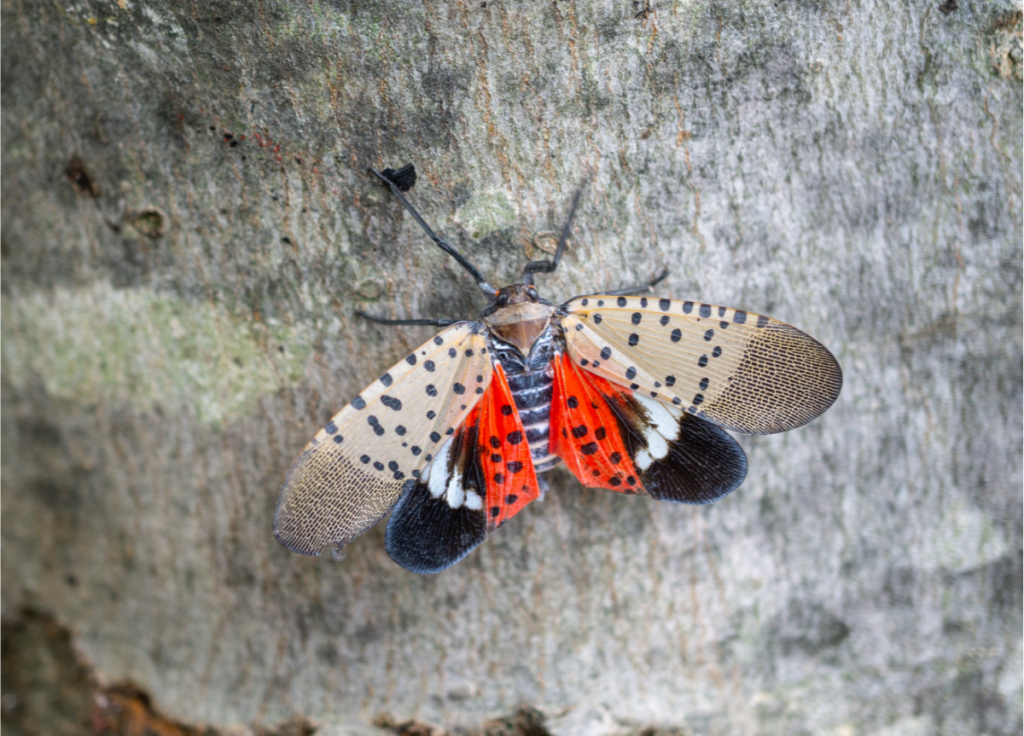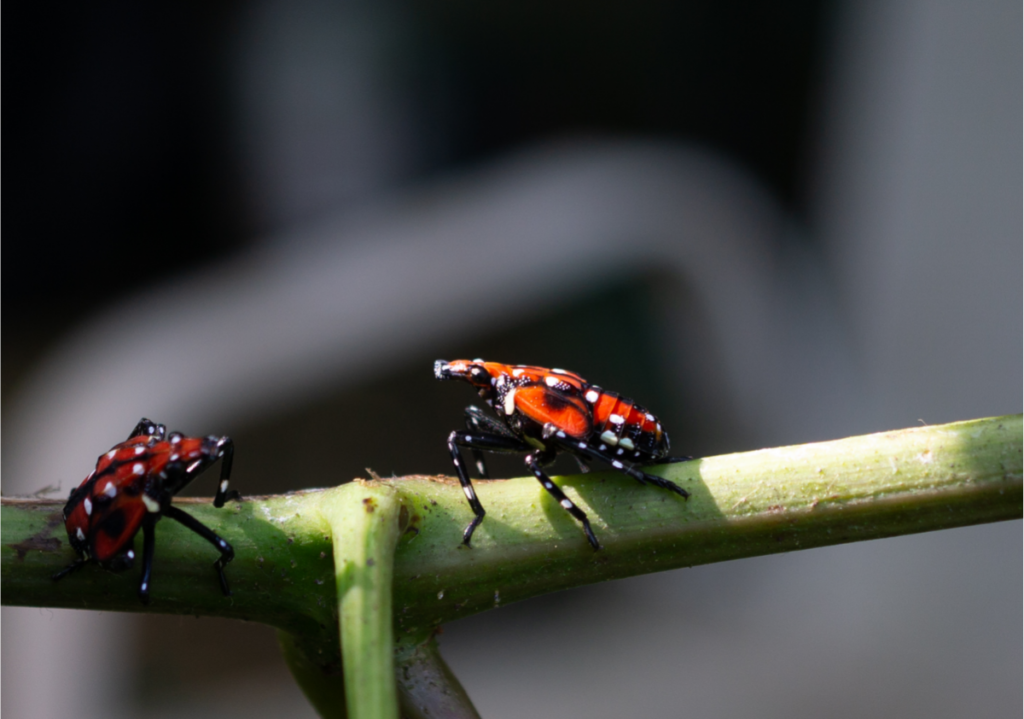Welcome back to the Lab!
When a young contestant at the Kansas State Fair submitted his insect collection for exhibition, he had no intention of prompting a federal investigation. But one specimen in his collection had never been seen in Kansas before, and its presence sparked an anxiety among experts that many in the eastern US have been feeling since spring. You’ve seen the headlines: I’m talking, of course, about the spotted lanternfly.
The spotted lanternfly belongs to a group of insects known as true bugs. Along with the typical insect characteristic – 3 body segments, 6 legs and 2 antennae – true bugs have piercing/sucking mouthparts that they use to consume food. While some true bugs, like assassin bugs and kissing bugs are predatory, most true bugs consume plant sap. Cicadas, box elder bugs, and of course, the spotted lanternfly.

The spotted lanternfly is a recent introduction to the United States, thought to have hitched a ride on cargo from its native China in 2014. Since then, like many invasive species, it has enjoyed an existence free from natural threats, and expanded its host plant range to include many agricultural crops and deciduous forest trees.
The lanternfly damages plants through direct and indirect measures. Like many true bugs, it uses its piercing and sucking mouthparts to pierce the phloem layer of plants to feed on sap. But the real damage is done after feeding; the lanternfly excretes a sweet, sugary substance that not only attracts other insects, but promotes destructive mold growth. This mold is ultimately what kills the host plant.

The lanternfly’s range has rapidly expanded since its introduction in Pennsylvania in 2014, prompting quarantine efforts in several counties in Pennsylvania, New Jersey, Maryland and West Virginia – and it hasn’t stopped there. Like many insects, the adults die off in the winter and their offspring overwinter as eggs, and that is where containment presents a challenge. While the adults are flashy, truly gorgeous and charismatic, their egg masses look like a wayward smear of mud, making identification challenging at best. In their native China, approximately 69% of lanternfly eggs are parasitized by the wasp Anastatus orientalis, and given the difficulty in finding their eggs, many are left wondering if importing their natural predators are our only option for containment.

It’s hard to talk about invasive species, especially in the midst of an invasion we don’t have a solution for yet, but I never want to end on a sour note. Back at the Kansas State Fair, the young insect enthusiast who inadvertently sparked a federal investigation confirmed that the specimen he found had been dead, and based on the state of deterioration, experts believe it was an adult who may have died the previous year. Since the entry, no other spotted lanternflies have been seen in Kansas, and the young insect collector won a blue ribbon for his efforts.
Until next time, thanks for visiting the lab!
Bug Wrangler Brenna
brenna@missoulabutterflyhouse.org
Want to revisit a previous Notes from the Lab issue? Check out our archive! Do you want to request a subject for an upcoming issue? Email me at the address above and put “Notes from the Lab” in the subject line.